My clients aren’t exactly requesting to do mountain climbers — they are super tough! But they also torch calories and work your entire body.
Mountain climbers, named after the challenging workout of climbing a mountain, improve both leg and core strength and raise your heart rate. For these reasons, the move is often a part of many workout routines, but proper form is essential to getting the most out of the move and to keeping yourself safe.
Benefits of mountain climbers
Mountain climbers require work from a lot of muscle groups, so the extra effort equals extra results. The move works the abs, low back, glutes and hamstrings — all major muscle groups that help us to maintain good posture.
Surprisingly, this high-intensity exercise is also low-impact, so it’s good for people who have joint pain but also want to burn calories and raise their heart rate.
Most common mistakes when doing mountain climbers
It’s important to have good form to prevent injury, so be careful not to arch your back or raise your hips too high. These mistakes put stress on the back because the core is disengaged.
It’s also important not to move too fast — while this may feel more intense, moving quickly makes it easier to forget about your core.
Try these tips to avoid these mistakes:
- Keep a long line from your head to your toes. Don’t arch your back or bend at the hips, but think of your body as one long, straight line.
- Keep your upper body in plank position. Although you’re moving your legs, your back and hips should maintain a strong plank.
- Maintain a steady pace. Don’t try to rush and move too fast to maintain your form — faster doesn’t mean better. It’s more important to keep your core engaged.
How to do a modified mountain climber
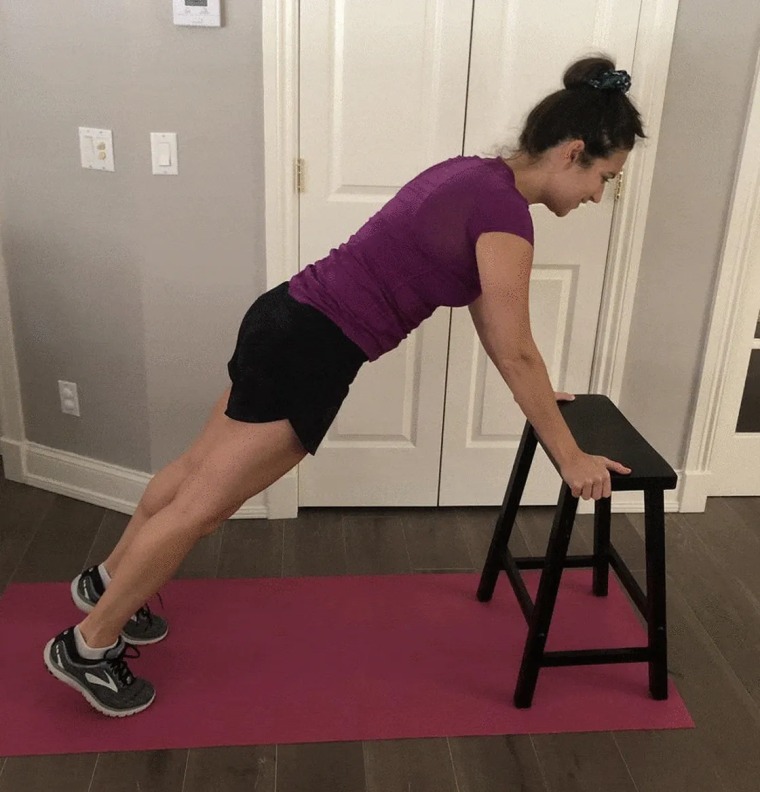
This exercise requires full-body engagement and precision. If you’re not quite there yet, try this modification to help gain the strength to perform a full mountain climber correctly.
For a modified mountain climber, use a chair. This will help with stability and decrease the intensity of the move. Start by placing the chair in front of you and put your hands on the seat. Make sure your hands are directly below your shoulders and your arms are straight.
Next, extend your legs behind you and balance on your toes with your core engaged; your body will be at a slight angle. Begin with your legs straight, and then start a marching movement by bringing your left knee towards your left elbow, replace your left foot back on the ground, then move your right knee towards your right elbow. Repeat this with your core engaged.
How to perform a mountain climber correctly
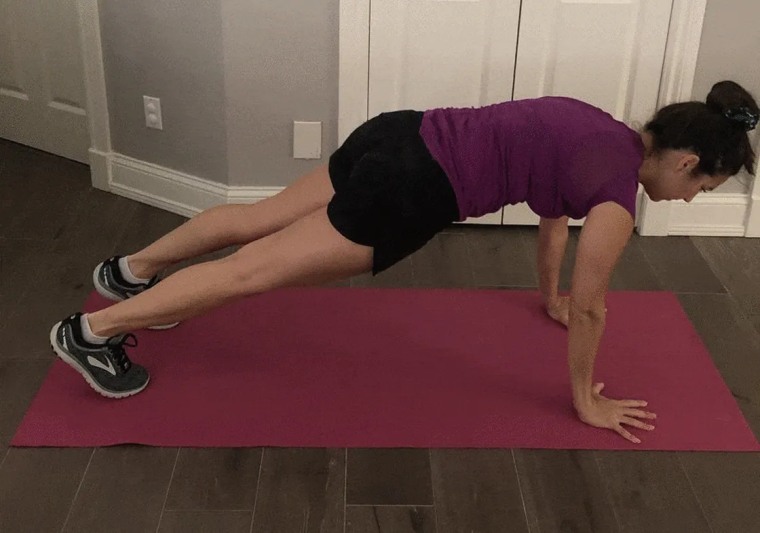
Follow these step-by-step instructions to ensure you’re performing mountain climbers properly:
- Begin in plank position, keeping your back straight, your hips low and your core engaged.
- Bring your right knee under your chest toward your right elbow.
- Return your right leg back to plank position; bring your left leg under your chest toward your left elbow.
- Repeat while alternating your legs, keeping a steady pace.
- Remember to breathe and concentrate on engaging your abs, glutes and hamstrings.
4 exercises that will help you master the mountain climber
It’s common to make mistakes while performing mountain climbers, especially if you’ve never tried them before. Here are some moves that work the same muscles; try them first to build strength that will make performing climbers easier.
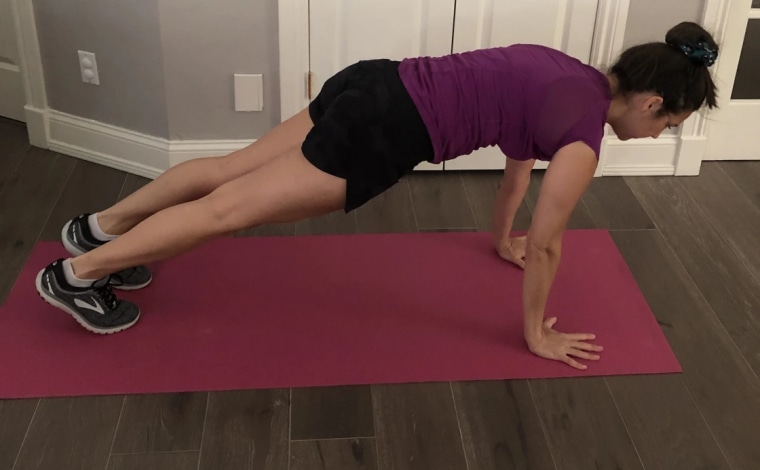
Plank
Being able to perform a solid plank will definitely help you perform mountain climbers properly. Put your hands on the floor below your shoulders, keeping your arms straight. With your back straight and your hips low, lift your body weight up, squeezing your core. Hold this position for 10 seconds. Repeat 10 times.
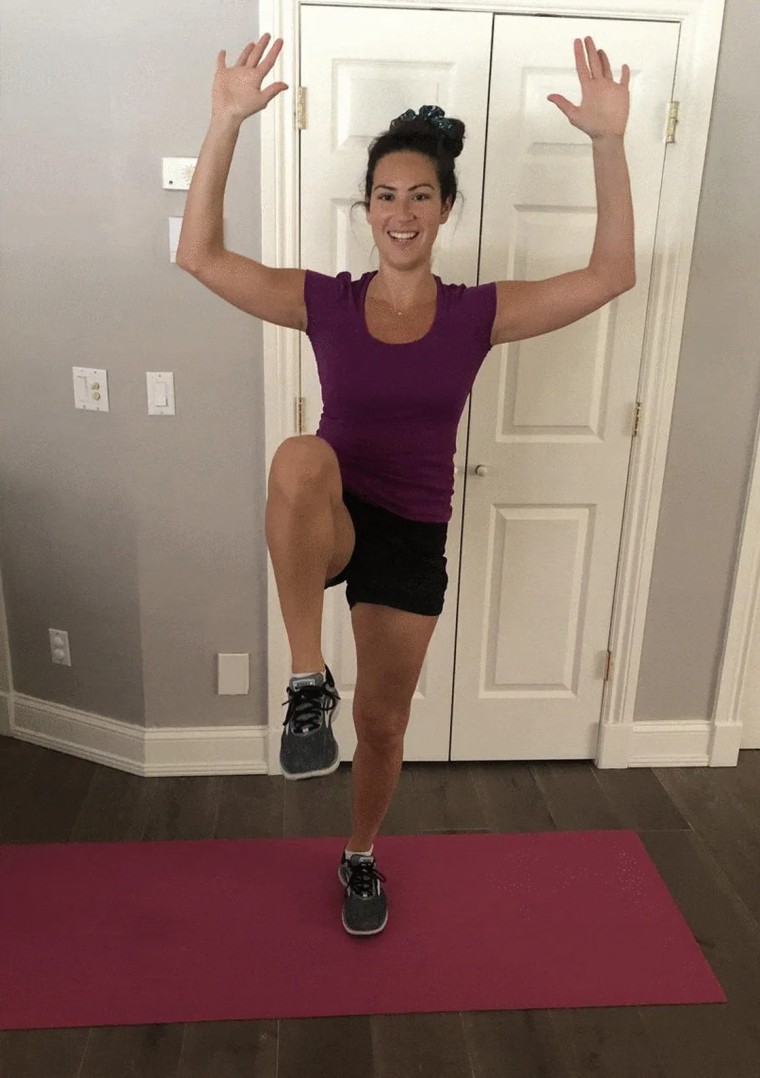
High knees
High knees require the same type of leg movements that mountain climbers do, but instead of being on the ground, you’ll be standing. Hold your arms out to your sides in a “cactus position” with your elbows bent at 90 degrees and your hands pointing up toward the ceiling. Cactus arms mimic the stationary upper body in mountain climbers, which recruits more of your core muscles. Holding your arms steady, bring one knee up toward your chest, stopping at waist height so that you’re making a 90-degree angle at the knee. Alternate your legs, keeping a quick pace. Repeat 10 times per knee.
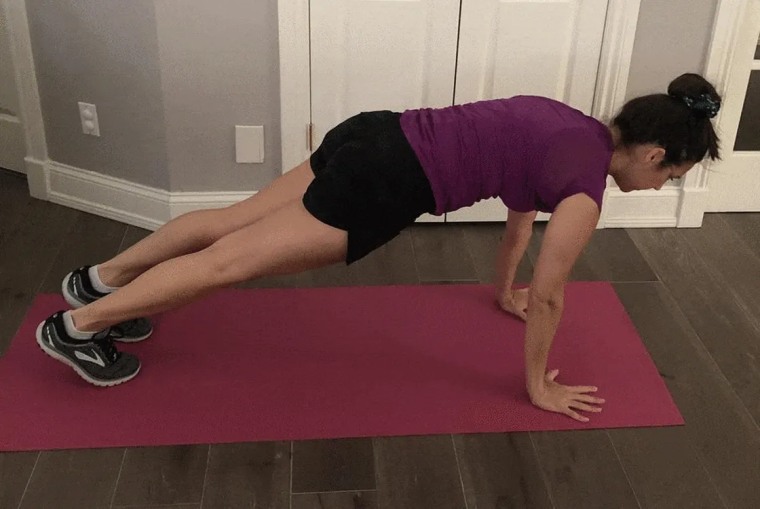
Plank jack
The plank jack falls in between plank and mountain climbers in terms of intensity, making for a perfect stepping stone. In plank position, begin jumping your feet out and in as if you would if you were doing a standing jumping jack. Keep your core and glutes engaged, and try not to let your hips bounce. Repeat for 10 jumps. (To modify: step each foot out to the side and back instead of jumping.)
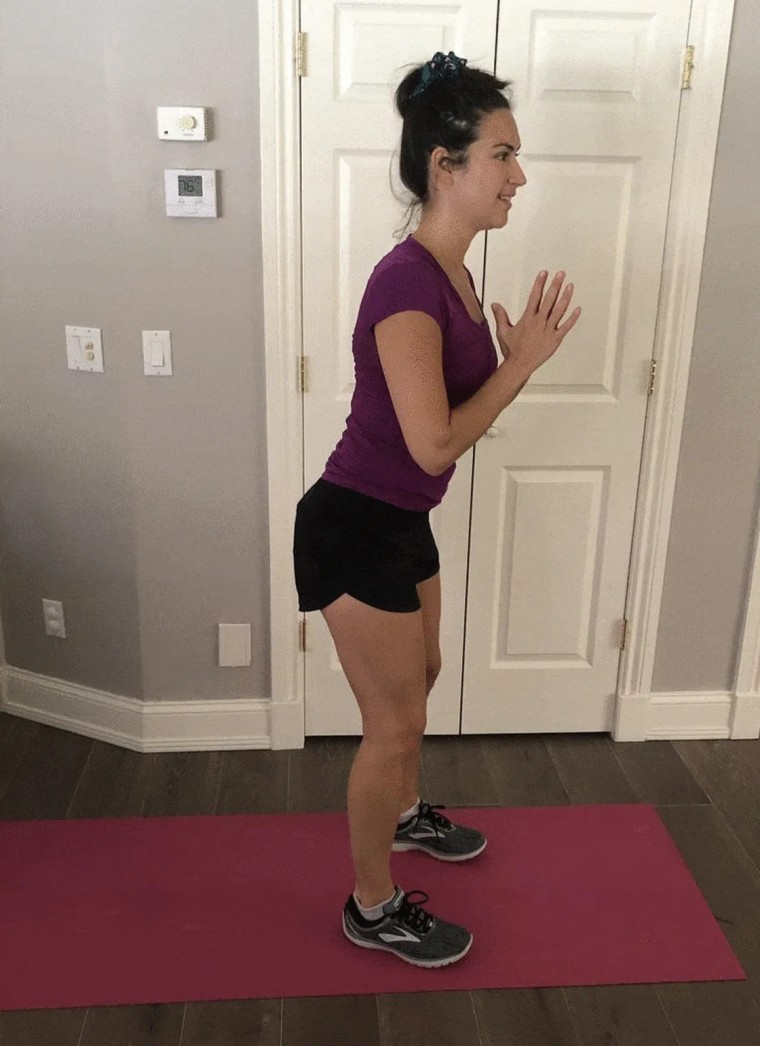
Squats
Mountain climbers require strong glutes, so performing squats beforehand will activate these muscles. Standing with your feet shoulder-width apart, bend at the hips as if you’re sitting back into a chair. Stand back up squeezing the glutes at the top, and repeat. Use your glutes and abs to bring your body up and down. Repeat 10 times.

